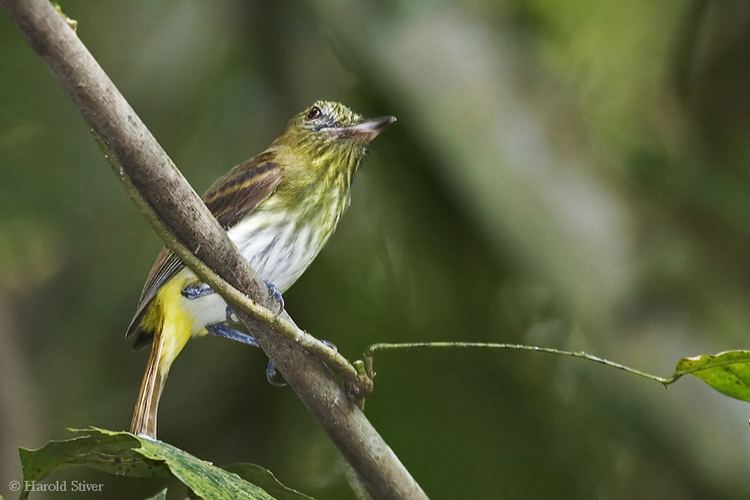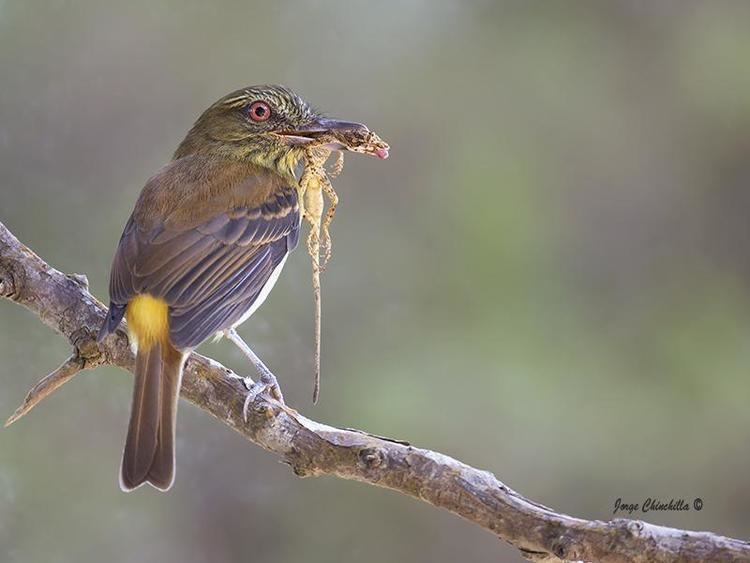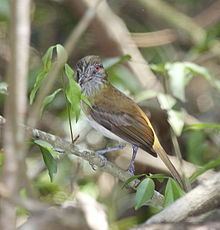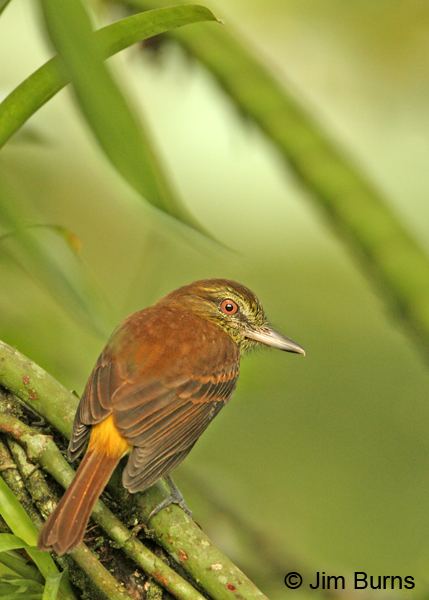Order Passeriformes Genus Attila Higher classification Attila | Phylum Chordata Family Tyrannidae Scientific name Attila spadiceus Rank Species | |
Similar Bird, Tyrant flycatcher, Yellow tyrannulet, Paltry tyrannulet, Tropical pewee | ||
The bright-rumped attila or polymorphic attila (Attila spadiceus) is a small passerine bird in the tyrant flycatcher family (Tyrannidae). It breeds from northwestern Mexico to western Ecuador, Bolivia and southeastern Brazil, and on Trinidad.
Contents

Bright rumped attila polymorphic attila attila spadiceus bogota birding
Description

The bright-rumped attila is a large tyrant flycatcher with a big head, hooked and slightly upturned bill and upright stance. It is 7 in (18 cm) long and weighs 1.4 oz (40 g). The head is olive-green streaked with black, the back is chestnut or olive, the rump bright yellow and the tail brown. The wings are dark brown with two pale wing bars and paler feather edging. The whitish or yellow throat and yellow breast are variably streaked darker. The belly is white becoming yellow near the tail. The iris is red. The sexes are similar, but young birds have a cinnamon-fringed crown and brown eyes.

The plumage is very variable, but the streaking below and obvious wingbars help in distinguishing this species from others in the genus. The calls include a loud beat-it, beat-it and a plaintive ooo weery weery weery weery woo. It does not move when singing, so can be difficult to see.

Central American birds have slightly different song structures and also tend towards lighter ochre plumage independent of Gloger's Rule; they are sometimes separated as flammulated attila (Attila flammulatus) . Their characteristic song given at dawn has been analyzed in detail: it has a very variable number of weerys which may become weery'os, and often ends in a woo-whit; a finite state machine has been developed to simulate this structure. However, due to the highly variable songs more data is required before the technically plausible split can be accepted; the AOU has so far refrained from formally acknowledging it.
Ecology

The bright-rumped attila is a common bird from the lowlands to 7,000 ft (2,100 m) ASL. It occurs in forests, second growth, pasture and plantations with trees, and shady gardens, and apparently it can tolerate a considerable amount of habitat destruction. It is an active, aggressive and noisy species, usually seen alone. It eats insects, spiders, frogs and lizards taken from vegetation or the ground. It will pursue prey on foot as well as attacking in short sallies, and will follow army ant columns. It also takes many fruits (such as from gumbo-limbo Bursera simaruba, and less frequently from Cymbopetalum mayanum) and seeds.
The nest is a deep cup of mosses, leaves and plant fibre; it may be built usually below 3m high amongst epiphyte, between buttress roots or in a bank, not necessarily in the forest. The typical clutch is two lilac- or rufous-marked dull white or pink eggs. Incubation by the female is 14–15 days to hatching, with another 17 days to fledging.
